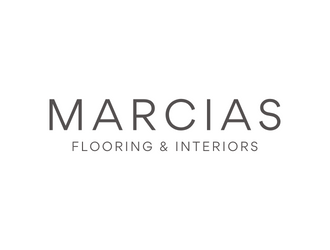Buying Guide for Engineered Wood Flooring
When buying engineered wood flooring, there is a lot of options. You have different species, colours, various tones, and finishes to consider. Engineered wood is a high-end alternative to solid wood flooring, suitable for all around the house. To help you make the best choice, here is a quick guide to buying engineered wood flooring.
In this article:
- What is Engineered Wood Flooring?
- Engineered Wood vs Solid Wood
- Wood Flooring Materials and Finishes
What is Engineered Wood Flooring?

Engineered wood flooring uses a construction of layers. It has a top layer of real wood. The top layer needs to be very tough to withstand high traffic areas throughout the house or commercial environments. It’s the top veneer layer that gives engineered wood flooring that rich and natural aesthetic.

Ideally, you want to use a floorboard with a thicker top layer. This is because you can sand and refinish the real wood layer several times therefore the thicker the wear layer, the better. Typically, the thickness of the top layer will range from 3mm to 7mm. In general, this type of flooring has a guaranteed lifespan range from 10 to 30 years, depending on the manufacturer. By resanding and refinishing the surface, you can maintain the appearance by removing built up dirt, scuff marks and scratches.
Under the top layer of wood, there are several layers to increase stability. These layers are glued together to create a plywood-like base. It’s this layered construction that makes engineered wood flooring less prone to damage from moisture and humidity than hardwood.
Engineered Wood vs Solid

If you’re looking to upgrade your flooring and love the look of wood, you have probably come across both engineered wood and solid wood flooring. So, what’s the difference. More and more people choose to fit engineered wood flooring in the home for a number of reasons.
Engineered wood comes in a wide range of finishes, colours, tones, and timber to suit any style. You can also get different effects like aged, sun-bleached or brushed to bring your design to your specifications and add greater character to your floor. Engineered wood comes pre-finished so there is no need to finish or oil the flooring yourself.

Unlike solid wood flooring, you can lay engineered wood over existing flooring, like concrete. It also works with underfloor heating. Another key difference is that you can put down engineered wood by yourself. The floorboards feature a simple tongue and groove construction for easy fitting.

As engineered wood has a real wood layer, you can continue to sand and refinish it over its lifetime. This helps to remove scuffs and give your flooring a new lease of life, even in high traffic areas.
Engineered wood is structurally stable and is not prone to expansion and contraction, a common issue with solid wood flooring in different temperature and seasonal weather changes.
Wood Flooring Materials and Finishes

Engineered wood is made from different types of hardwood like oak, ash, and maple. Solid oak wood flooring is sought after and with a hefty price tag to match. With engineered wood, you get the beautiful finish of timber without the price of solid and many additional benefits.
There is a massive range of finishes and styles to choose from. It really comes down to your own style and design and selecting the correct floor finish to match your vision and lifestyle.

On top of different woods and styles, you have the type of finish. In general, you can buy engineered wood oiled and lacquered in either satin or matt. An oiled finish is a more traditional option for a very classic finish. A matt lacquer provides a more resistant finish to scuffs, scratches, and splashes. It looks similar to oil but with higher resistance. At the same time, a satin lacquer will create a slightly glossy surface. This finish still has a high level of resistance to scratches and sunlight but with a shinier surface.


The finish you choose really comes down to your taste and where you plan on installing the flooring. If you have a room that gets a lot of use from the family with pets and kids and is a south-facing room with a lot of sunlight, a lacquer finish is ideal.
Engineered wood flooring is a fantastic way to bring in the natural look of wood without the hassle of installing solid wood flooring. It means that you can use it in rooms that you wouldn’t usually install wood, like the kitchen and bathroom. The construction of engineered wood flooring means that it’s more stable and isn’t prone to the same damage from moisture as hardwood flooring. Engineered wood flooring can elevate a room and complete the overall desired design of a space.



